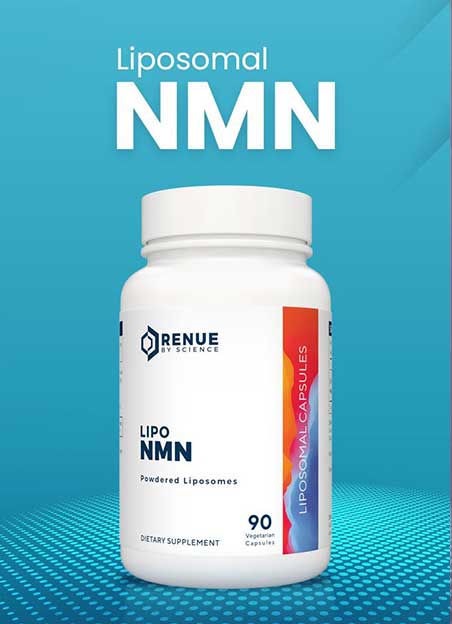Glucosamine is an amino sugar that occurs naturally in the bodies of animals and humans. It is a building block for a range of molecules that provide different functions in the human body.
Primarily, glucosamine is known for its role in maintaining and developing the cartilage in the joints.
Glucosamine supplements come in different forms, including:
• N-acetyl glucosamine
• Glucosamine hydrochloride
• Glucosamine sulfate
Glucosamine is used in making a range of chemicals that, in turn, are used to make fluids surrounding joints and build cartilage, tendons, ligaments, and tendons.
Joints find cushion through surrounding cartilage and fluid. Glucosamine might be instrumental in preventing the breakdown of the joints by supplementing the fluid and cartilage.
Glucosamine supplements are made from natural sources, where it is found commonly. These sources include fungi, animal bones, shellfish shells, and nonhuman tissues.
The supplement is present in both oral forms and as salves and creams.
Benefits of Glucosamine
Glucosamine supplementation has a range of benefits, with hundreds of studies already done exploring its efficacy. Some of the most prominent benefits of glucosamine have been discussed as follows.
Support for Healthy Joints
The most important role of glucosamine is that it helps the articular cartilage in developing healthily. Articular cartilage is a smooth tissue that forms at the place where joints are formed. The smooth surface of the tissue helps in the smooth working of the joint.
Articular cartilage ensures that the friction between bones is minimized with the help of synovial fluid that lubricates bones. That allows bones to move painlessly and freely across each other.
Many studies have explored the impact of taking glucosamine supplements on joints. Research shows that the supplements prevent cartilage from breaking down, thus protecting joint tissue in athletes.
A study was carried out with professional rugby and collegiate soccer players over the course of 3 months. The participants were given 1.5 to 3 grams of glucosamine daily. By the end of the study, the differences were significant, and the supplementation had lowered the cartilage breakdown.
More research with a larger and more diverse sample size is needed to accurately find out the extent of the connection.
Reducing Inflammation
One of the most important benefits of glucosamine comes in the form of its anti-inflammatory action. It is used to treat the symptoms of several conditions caused by inflammation.
It is not exactly understood how glucosamine supplementation helps with inflammation, but studies have shown its efficacy.
In a study involving 18 overweight adults, two forms of glucosamine were given to the participants. Chondroitin sulfate was given in a dose of 1200 mg per day, and glucosamine hydrochloride was given in the form of 1500 mg doses.
The supplementation lasted for a total of 28 days. Results show that glucosamine supplements were successful in lowering a key biomarker of synthetic inflammation known as C-reactive protein in the control group by 23 percent as compared to those in the placebo group.
This study also supplemented the participants with chondroitin, like most studies on glucosamine. Chondroitin is similar to glucosamine and is also instrumental in maintaining healthy cartilage maintenance and production.
It is unclear how chondroitin and glucosamine lower systematic inflammation and whether they possess any localized effects for anti-inflammation effects.
Research shows that chondroitin and glucosamine stop the inflammatory pathways from getting activated in synovial cells. These cells produce joint fluid or synovial fluid components.
Glucosamine also helps reduce the risks of conditions like type 2 diabetes that are mediated by inflammation.
More research needs to be done in order to understand how glucosamine helps in reducing inflammation in the body and if it can be targeted to help inflammation in specific areas.
Treatment for Joint and Bone Disorder
Another important benefit of glucosamine lies in its ability to treat a range of joint and bone disorders. The most promising research in this area is focused on glucosamine sulfate, one of the types of glucosamine.
Glucosamine sulfate has shown a great potential to treat osteoporosis, rheumatoid arthritis, and osteoarthritis in many studies.
A wide array of studies show that daily supplementation of glucosamine sulfate offers an effective and long-term treatment option for patients with osteoarthritis. It not only slows down disease progression it also helps in maintaining joint space and reduces the pain significantly.
In other studies exploring the impact of glucosamine on osteoarthritis of the knee, hip, and hand, there were no significant improvements in function or joint pain.
Due to the fact that research presents conflicting evidence, some scientific organizations do not recommend using glucosamine for knee osteoarthritis.
That means that more human studies are required to form a deeper and better understanding of the mechanisms involving glucosamine’s impact on bone and joint diseases.
Other Benefits
Apart from the benefits mentioned above, the following benefits of glucosamine do not have conclusive human studies, but the preliminary research has shown strong potential for efficacy.
Interstitial Cystitis
Interstitial cystitis is a condition of bladder muscles where bladder pain and frequent urination are the common symptoms. The condition is caused by chronic inflammation of the muscles in the patient’s bladder.
One of the leading causes of interstitial cystitis is the deficiency of glycosaminoglycan. It is a compound made by the conversion of glucosamine. Scientists speculate that glucosamine can be helpful in managing the condition.
However, the research into the area is still in its preliminary stages.
Inflammatory Bowel Disease
Chronic inflammation in the intestines is caused by a condition known as Inflammatory Bowel Disease (IBD). The condition is the leading cause of many stomach-related symptoms such as diarrhea, stomach cramps, and bloating. IBD is also caused by the deficiency of glycosaminoglycan.
An animal study about IBA showed that glucosamine supplements could help reduce inflammation in mice with IBD.
A small study comprising 34 participants also indicated that there is potential for glucosamine supplements to improve symptoms of IBD. Participants who took N-Acetyl glucosamine saw a significant improvement in diarrhea and pain after four weeks of supplementation.
The problem with this study was that there was no control group, and it was not blinded. Thus, no concrete conclusions can be drawn about how effective glucosamine can be in alleviating the symptoms of IBD.
Multiple Sclerosis
Multiple sclerosis is an ailment that primarily affects the central nervous system. Symptoms of the disease can be different for different people, but the major symptoms include trouble performing basic functions such as seeing, talking, and walking. You can also experience tremors and fatigue when you have multiple sclerosis.
Many people are of the opinion that glucosamine might effectively treat multiple sclerosis, but there is no concrete research behind these claims. A review concluded that glucosamine supplementation had no impact on disease progression or relapse rate of multiple sclerosis.
Glaucoma
Glaucoma is a serious ailment of the eye that can result in blindness and vision loss. Some people are of the opinion that glaucoma can be treated with glucosamine.
Animal studies have shown potential for healing effects in the eyes by glucosamine sulfate. A research study involving rats showed that the substance provides an antioxidant effect to the retina and reduces inflammation.
However, another study showed the exact opposite effect and concluded that older adults, a vulnerable group for glaucoma, may face a higher risk for glaucoma after glucosamine supplementation.
In the absence of rigorous and long-term research studies, it is possible that the supplements might be harmful to your eyes. Consult your doctor before taking these supplements for glaucoma.
Temporomandibular Joint Disorders (TMJ)
The last one on the list is temporomandibular joint (TMJ) disorders. TMJ comprises the health issues concerning the jaw, such as locking of the jaw joint and jaw pain. Some people insist that glucosamine can be for TMJ disorders.
One study has proven that glucosamine seems to have a mild impact on inflammatory markers, pain reduction, and jaw mobility. Participants who received a combination of chondroitin and glucosamine sulfate showed progress in the three areas mentioned.
Another study demonstrated a significant reduction in inflammatory markers such as pain reduction and maximum mouth opening after the participants were taking chondroitin sulfate and glucosamine supplements in doses of 1.2 and 1.5 grams, respectively, for a total of eight weeks.
It must be noted here that despite the promising results from these studies, the data collected from these studies is not enough to form conclusive results. Much more research is needed to establish a pattern and treatment plan.
Frequently Asked Questions
Following are the most frequently asked questions about grape seed extract.
- Is it safe to consume glucosamine?
Glucosamine is most likely safe for consumption for most, but there are still some risks associated with the supplements.
Some people may experience the following adverse reactions from the consumption of glucosamine supplements:
• Abdominal pain
• Heartburn
• Diarrhea
• Nausea
• Vomiting
People who have type 2 diabetes should take glucosamine after consulting with their doctors. Even though the risks are low, type 2 diabetes patients may experience a small hypoglycemic effect.
Glucosamine can also exacerbate the risk of glaucoma. People who are at such a risk should not take glucosamine. These include patients with high blood pressure, heart disease, diabetes, people older than 60, and those with a history of glaucoma in their families.
2. Can I take glucosamine while I am pregnant or breastfeeding?
You should not take glucosamine when pregnant or breastfeeding. It may affect the baby negatively.
3. How much glucosamine should I take?
Glucosamine can be taken in one big dose of 1.5 to 3 grams per day or several doses over the day that all amount to a figure that falls in this range.









